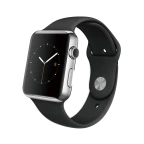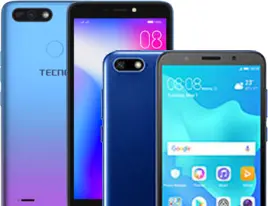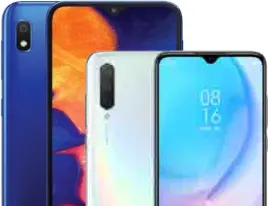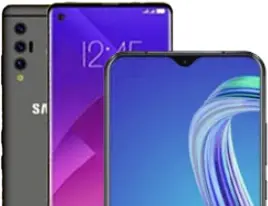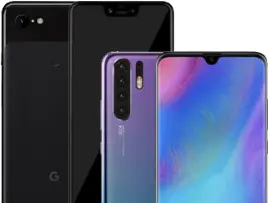Apple iPhone X
Specifications
- 5.8 inchesDisplay
- 3 GBRAM
- 271610.35 mAhBattery
- 12 MP + 12 MPBack Camera
| General Features | |
|---|---|
| Release Date | 01 Sept 2017 |
| SIM Support | Dual Sim, Dual Standby (Nano-SIM) |
| Phone Dimensions | 143.6 x 70.9 x 7.7 mm |
| Phone Weight | 174 g |
| Operating System | iOS 11.1.1, upgradable to iOS 11.4.1 |
| Display | |
|---|---|
| Screen Size | 5.8 inches |
| Screen Resolution | 1125 x 2436 pixels |
| Screen Type | Super AMOLED capacitive touchscreen, 16M colors |
| Screen Protection | Corning Gorilla Glass |
| Memory | |
|---|---|
| Internal Memory | 64/256 GB |
| RAM | 3 GB |
| Card Slot | No |
| Performance | |
|---|---|
| Processor | Hexa-core 2.39 GHz (2x Monsoon + 4x Mistral) |
| GPU | Apple GPU (three-core graphics) |
| Battery | |
|---|---|
| Type | Non-removable Li-Ion 2716 mAh battery (10.35 Wh) |
| Camera | |
|---|---|
| Front Camera | 7 MP, f/2.2 |
| Front Flash Light | No |
| Front Video Recording | 1080p@30fps |
| Back Flash Light | Yes |
| Back Camera | 12 MP + 12 MP |
| Back Video Recording | 2160p@24/30/60fps, 1080p@30/60/120/240fps |
| Connectivity | |
|---|---|
| Bluetooth | Yes |
| 3G | Yes |
| 4G/LTE | Yes |
| Radio | No |
| WiFi | Yes |
| NFC | Yes |
Highlights
After months and months of speculation that involved various names, features, dos and don’ts, Apple’s September 12th Keynote event brings us to the much awaited release of the 2017 iPhones. As previously stated, Apple indeed released three iPhones this year for the first time in their history with two of the iPhones being customary upgrades upon their predecessor while the third features their special 10th anniversary addition release with a mystery name that has now been confirmed as well. Ladies and gentlemen, behold the iPhone X (pronounced as the iPhone 10).
Back to the times of the iPhone 4
The iPhone 4 was the first time when Apple moved from metallic build materials to a dual-glass panel design that was an excellent hit at its time. That was primarily because of the added premium-ness added by the glass to the smartphone that probably was never seen before as most smartphones docked at metallic build materials and aluminum unibodies at that time.
With the iPhone X, Apple’s back to those days which cannot be labeled as a surprising move by any means. One of the most widely reported rumours prior to the smartphone’s release was that the new iPhones would definitely feature an all-glass build. It wasn’t confirmed whether all three new releases would go that way but that has indeed turned out to be the case. All the new iPhones feature a dual-glass panel design that simply resonates premium-ness.
Another of the rumours that have indeed turned out to be true is that the iPhone X would feature a tad thicker build than the previous iPhone 7s. By a tad, we mean that the smartphone features a 7.7mm width and a 174g weight. That’s amazing considering the fact that the iPhone X also features improved IP68 certified dust and waterproofing as well as an improved battery over its predecessors.
As was promised by the rumour mill, we have a completely bezel-less front panel
All rumours aside, something that popped-up with the highest intensity during the entire iPhone X saga was the fact that the smartphone would feature little to no bezels at all. Samsung’s release of the Galaxy Note 8, S8/S8+ and the subsequent case manufacturer plus screen protector leaks further escalated those rumours. It was only a matter of time before all that turned into reality as the iPhone X features exactly what was predicted months ago.
We’re talking about a completely bezel-less display that stretches all the way from the top of the smartphone’s front panel to all the way down to its speaker grills and USB type-C port. Dissecting its details, we have a 5.8 inches Super AMOLED capacitive touchscreen with 428ppi pixel density. The massive display allows the device to feature a whopping 82.9% screen to body ratio which is a bit lower than what we expected.
The screen’s 428ppi pixel density allows an 1125p HD resolution that seems a bit odd as we’re more used to seeing 1080p or 1440p displays come 2017. What certainly is a given is that the smartphone produces graphics of the highest order that look simply breathtaking atop the gigantic display upfront. Due to its bezel-lessness, the smartphone contains its size, stays relatively small and compact while on the other hand, also offers a pretty big display.
3D cameras and a portrait mode for your secondary sensor
The cameras department of the iPhone X presents another big change to what we’re used to seeing from the Cupertino Giants. The smartphone features a dual 12 MP primary camera with technologically improved 2x optical zoom, phase detection autofocus, OIS and a dual-tone LED flash. One of the two sensors is a telephoto sensor while the other is a wide-angled one (as was the case with the previous iPhones and the iPhone 8 Plus). Your craze with the portrait mode is likely to regain momentum while the camera’s claim to be the best in the business has also taken a huge hike upwards.
While you may have heard of the aforementioned features before, what you haven’t heard of is that the smartphone’s secondary 7 MP sensor is in-fact a 3D camera. As has always been the case with Apple adding something that hasn’t been seen before, the front camera now possesses the portrait mode capability as well like the device’s primary sensor. We’ll reveal the major reason for this added technology to the selfie sensor in just a while.
The fastest smartphone in the world just got even faster!
After the advent of the Galaxy Note 8 and the Galaxy S8, a-lot of comparisons were made between them and the previous iPhones. Aesthetics and exteriors aside, none of the latest 2017 releases couldn’t beat the iPhone 7 Plus when it came to performance and speed.
With the iPhone X, the fastest has definitely gotten even faster. Powered by a similar but improved hexa-core processor with 3GB RAM, the built-in iOS 11 will breeze its way through the most demanding of processing tasks. The addition of Apple’s A11 Bionic further speeds-up processing as the chipset is optimized for heavy applications, machine learning, graphics intensive etc. applications.
The smartphone either comes in a 64 or 256GB internal storage variant with expectedly no external card-slot present. As was the case with the previous iPhone 7s, the headphone jack has gone for good while dual-stereo speakers allow vastly improved sound quality and loudness.
Now, time for why the iPhone X’s selfie sensor features much improved prowess; that’s attributed to the fact that Apple has ditched Touch iD with the iPhone X and instead, a supreme facial recognition or Face iD system is used to seamlessly unlock your iPhone. The rumours of a front-mounted or underneath display embedded Touch iD have finely been put to rest once and for all.
USB type-C v3.0 ensures rapid data transfer between the iPhone X and other devices while Fast Charging technology has also seen improvement with the smartphone now being able to generate 50% battery charging within 30 minutes of time. Speaking of charging, another fascinating addition the iPhone X is wireless charging. While it’s a feature to cherish, its applications for a Pakistani user are yet to be known.
About its colour schemes, the smartphone comes in both Apple’s famed Space Grey and Silver.
Expected launch date and price
Last but not the least, this is the segment that people mostly care about; the iPhone X is Apple’s most expensive smartphone ever with the device seeing a launching price-tag of $999. That roughly equates to a massive 106,000 rupees. Don’t get too excited just yet, if you even were, because this pricing is only meant for those countries where official Apple Stores are present.
Sadly for the case with Pakistan, we haven’t yet seen an official store here come 2017 which leads us with much higher prices. With the existing price trends of the iPhone, it’s fair to say that the smartphone would cost as much as 110-130,000 rupees upon its arrival here which is simply and utterly mind-boggling. Furthermore, we expect the iPhone X to land somewhere in between mid-October to early November 2017 in Pakistan as newly launched iPhones do take a couple of months to reach our shores.
New Models:
- Apple iPhone XS (September 2018)
- Apple iPhone XS Max (September 2018)








